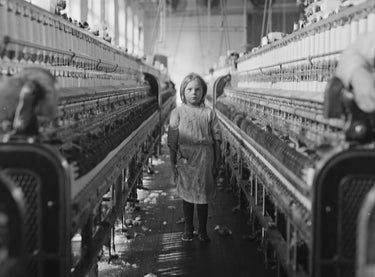Fashion with integrity: combating child labor in the fashion industry
At LynnSophie, we believe in fashion with integrity. As a clothing brand committed to ethical production and sustainability, we believe it is our responsibility to shed light on the dark side of the fashion industry: child labor. In this blog, we want to take you behind the scenes and reveal the reality of child labor in the fashion industry. We will discuss the causes, consequences, and the steps we at LynnSophie are taking to combat this practice. Our mission is to raise awareness and work together towards a better, fair future for all children worldwide. Let's fight this dark side of fashion together and strive for an industry where everyone is treated fairly.What does child labor in the fashion industry mean?
Child labor is a dire problem in the fashion industry, where children are exploited for cheap labor to keep costs down and increase profit margins. Several reasons contribute to this issue:
1. poverty: In many developing countries, families live in extreme poverty. Parents send their children to factories to generate extra income.
2. low levels of education: A lack of access to quality education forces children to work instead of attending school.
3. weaker laws and regulation: In many countries, labor laws are often weak or poorly enforced, allowing child labor to flourish.
4. demand for Cheap Fashion: The pressure to produce increasingly cheaper fashion encourages the use of cheap labor, including children.
Consequences of child labor
Children often work in dangerous conditions without adequate protection, leading to serious health problems. Beyond the immediate hazards, child labor has enormous consequences:
- Deprivation of education: Child labor deprives children of the opportunity for a good education, limiting their future opportunities and quality of life.
- Emotional and psychological damage: Working in harsh and exploitative conditions can cause serious emotional and psychological harm to children.
How prevalent is child labor?
The risk of child labor varies by country and production chain segment. Countries such as China, Uzbekistan, Bangladesh, Egypt, Thailand, and Pakistan are notorious for this issue. The deeper you go into the production chain, the more likely you are to find child labor. While child labor is rare in the large factories that supply directly to international clothing companies, the risk is higher when manufacturers outsource orders to smaller factories and workshops where there are few or no inspections.
Steps to Tackle Child Labor
Addressing this crucial problem requires immediate action. Several steps can help:1. improving and enforcing labor laws: Stronger laws and better enforcement are urgently needed to prevent child labor.
2. investing in education: Offering educational opportunities helps children break out of the cycle of poverty.
Both government agencies and brands, along with consumers, play major roles in reducing this problem:
- brands: Must ensure transparency in their supply chains and work with suppliers who adhere to fair labor practices.
- consumers: Can support ethical and sustainable brands by making conscious purchasing decisions.
What LynnSophie does
For LynnSophie, sustainability is not just a buzzword but a concrete commitment deeply rooted in our business philosophy. Before launching our clothing line, we thoroughly assessed several clothing factories. Teams of experts personally visited these factories to ensure not only that working conditions were acceptable but also that no child labor was involved.This careful selection process emphasizes our commitment to fair production practices and responsibility to both customers and the global community. By embracing transparency and ethical choices, LynnSophie aims to have a positive impact on the fashion industry and strengthen its role as a sustainable leader.

